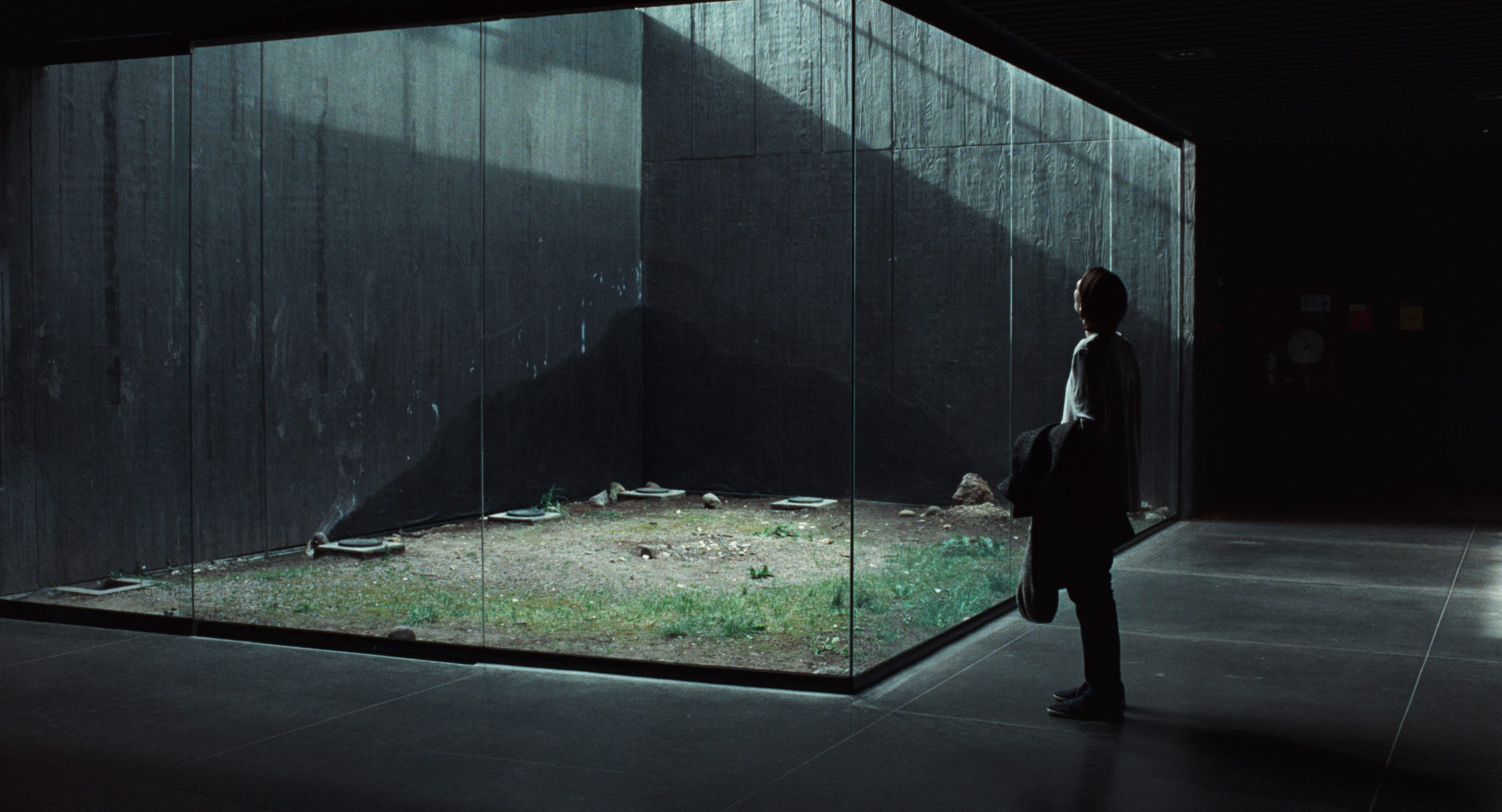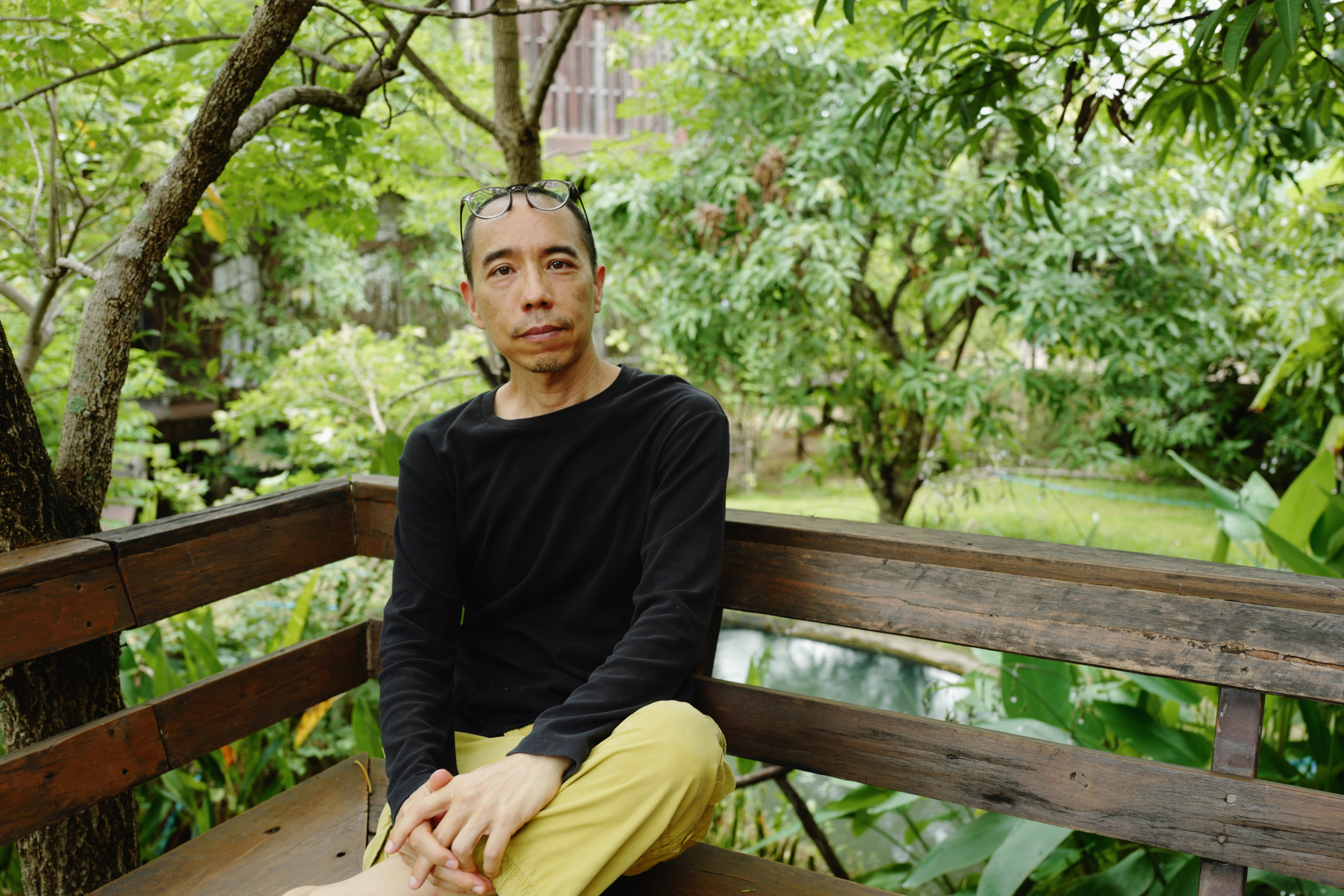Memoria

Apichatpong Weerasethakul, Memoria, 2021, still [courtesy of Kick the Machine Films and NEON]
Share:
A murky predawn setting opens Memoria, the camera trained on gray curtains inside a seemingly empty bedroom. Everything is hushed, still. Or at least that’s what I recall, because what I remember most clearly is not so much the quiet, but the moment later, the moment we first hear it. After a sustained silence, long enough to quiet expectations and to lull the audience into a near-somnambulist state, a forceful thud ruptures the space on screen and off screen. The sound jars us, the night, the cinema, the woman whose body appears, and it alters the density in the air, the pressure between us and the screen.
Throughout most of Memoria—Apichatpong Weerasethakul’s newest film, starring Tilda Swinton as Jessica—this deeply disorienting internalized boom sends its main character searching for explanations and remedies, in part to locate its origins, and, at times, to rid herself of it. Manifesting unannounced at any given moment, etiology unknown, this din incites a particular brand of claustrophobia as Jessica realizes only she can hear this peculiar thump, strangely intimate yet titanic in texture. “It’s like a rumble from the core of the earth … and then it shrinks,” she tells a sound engineer named Hernán (Juan Pablo Urrego) in a beautifully restrained scene wherein the new acquaintance and audio expert works patiently to help recreate what she hears.
Apichatpong Weerasethakul [courtesy of Kick the Machine Films and NEON]
Watching Memoria, one has the sense that this force resides both within the mind and outside it, registering on a seismic scale larger than any single figure’s psychosomatic disturbances. After all, the thundering noise possesses the capacity to perform temporal resets. Jessica’s thump occurs, at one point during dinner with her ill sister, Karen (Agnes Brekke), and her sister’s husband, Juan (Daniel Giménez Cacho), and apparently erases recent experiences Jessica shared with Karen. Although only Jessica hears her rumbling, one can’t quite tell whether the noise has removed memories of the event from her mind or from the wider landscape of events endured by all.
As much as the film is about Jessica’s hunt for answers regarding the din that haunts her private, internal terra, Memoria maps out a larger set of coordinates across the filmic landscape where traumatic sound residues collect. What does a rock remember? A jungle ravaged by colonialism? A hole in a human skull from thousands of years ago, or a living body suffering from an illness? What are cars sounding out when their horns go off in symphonic unison? What does an instrument played by various individuals over time carry in it? As Jessica seeks to identify the sound imprint inside her, Memoria treats all matter (the film itself included) as a kind of resonant body embossed with an acoustic sediment of the physical pressure exerted upon it—be it that of a hand’s tender touch or of heavy construction equipment boring a hole into the earth near Bogotá, and in the Colombian countryside surrounding it, where Memoria was shot.
What would an archeology of the unutterable look like? Probably something like Memoria. In a press conference I attended after the film’s screening, Tilda Swinton mentioned her personal attraction to the “inarticulacy” of life. In many ways Memoria is about creating a sound map of the unutterable, that unable-to-be-spoken-about space hollowed out between hearing something inside one’s head and trying to describe it to someone who is attempting to recreate it. As Jessica leaves Bogotá, traveling into the countryside, she encounters a man—another, older Hernán (Elkin Diaz)—with whom she communes. The time with this other (Or perhaps the same?) Hernán is spent in deep listening, cultivating a practice akin to that of the late, great American composer and pioneer Pauline Oliveros. “I remember everything, that’s why I limit what I see,” he tells her. “There are plenty of stories already … like this stone.”
Here is where the unutterable piques. First, in one of the most superlative single-take performances in recent film history, Diaz lies down to act out a sleep–cum–brief, nonchalant death and subsequent return to life. Second, as Jessica and Hernán share an ecstatic transmission of sound memories when they touch, awakening a sort of collective signal from penumbral chambers and sending it forth into the air. “I’m like a hard disk,” he says, “and somehow … you are an antenna.”
From its opening moment, Memoria has all its antennae out, tuned to every airwave—birdsong, street noise, a dog’s bark, air moving. This aspect gives rise to an ongoing composition of minor noises—primarily nonhuman ones—that lives across the film’s entirety. Even beyond the preponderance of sonorous investigations narrativized in the movie, this fabric of intonations shifts one’s attention through the process of watching. French philosopher Gilles Deleuze devoted two volumes to cinema studies, one on the “movement-image,” the other on the “time-image.” Perhaps here, what we have is the emergence of a different texture altogether, the “sound-image.”
Apichatpong’s films and installations often feel like a collection of proximities, a gathering of loci that comprise a constellate narrative. A whole thing aggregates and, in doing so, hovers between its loosely tethered parts. Stories and lives channel through moments and beings, providing us with room to witness how times and zones rhyme or don’t. This technique abounds in Memoria as Jessica—an British expat, a florist, and an outsider to her environs—visits Bogotá, to probe her surroundings for answers about her own affliction and others’. But perhaps more so than any other work of Apichatpong’s to date, Memoria crafts its ephemeral form vis-à-vis this tapestry of sound-images.
And such a tapestry extends even beyond the multiple localities inside the film ….
After attending the press screening of Memoria, I received one of the more enticing email blasts ever: a PR announcement sharing the news that Memoria was to play in cinemas forever. FOREVER. One cinema at a time only, in perpetuity, never to be streamed, never to be released on DVD, but screened endlessly into the future. The experience of watching Memoria is something like walking into multiple distances—some individual, some collective, some archived, some (as you will see if you watch the film) of a speculative elsewhere. The announcement of Memoria’s screening parameters hones its uncommon form even further. It also asks that we shift our attention to the sound-image experienced during the collective act of watching and listening, as framed by the architectural reality of cinema dark—a resonant body not unlike those at the forefront of Apichatpong’s newest work.
Anthony Hawley is a New York-based interdisciplinary artist and writer. His short films and solo exhibitions have been presented by Vox Populi, the Guggenheim Museum’s Works & Process series, CounterCurrent festival with the Menil Collection and Aurora Picture Show, and others. His writing on art and film appears in Art in America, Artforum, BOMB, The Brooklyn Rail, Frieze, MUBI’s Notebook, and elsewhere. Hawley and violinist Rebecca Fischer constitute the multidisciplinary collaboration The Afield. He is the author of two poetry collections, and his artist book dear donald … was recently published by NoRoutine Books.
